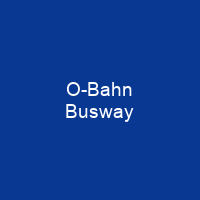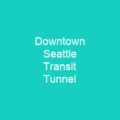Adelaide’s O-Bahn system was conceived by Daimler-Benz to enable buses to avoid traffic congestion by sharing tram tunnels in the German city of Essen. Adelaide’s track is 12 kilometres long and includes three interchanges at Klemzig, Paradise and Tea Tree Plaza. An additional section including a 673-metre tunnel opened in 2017 at the city end to reduce the number of congested intersections buses must traverse. Buses can travel at a maximum speed of 100 kmh, but are now restricted to 85 kmh.
About O-Bahn Busway in brief

With the introduction of the new buses in 2007, South Australia’s bus rapid transit system was expanded to cover the north-eastern suburbs of the city. The current service area covers the northern suburbs of Adelaide, north-east of the Adelaide CBD and north-west of the suburb of Modbury. The bus lanes continue north to the Torrens River and into the East Parklands, where it enters a 60 metre tunnel at a speed limited to 40 kmh, due to the tight initial corner, ensuring that the rear tyres do not’scrub’ against the track. The development of the O-Bhan busway led to the development of the Torrens Linear Park from a run-down urban drain into an attractive public open space. It has also triggered urban development around the north eastern terminus at Modbury, with a number of new homes being built in the area since the busways were built. The O Bahn is elevated from the ground because of the poor quality of alluvial soils along the River Torren’s, which frequently move due to their high level of plasticity. At the city receiving the bus lanes, it enters an 850-metres tunnel, completed in December 2017, which curves from east to north, emerging onto bus lanes in the middle of Hackney Road just north of the intersection with Botanic Road and North Terrace.
You want to know more about O-Bahn Busway?
This page is based on the article O-Bahn Busway published in Wikipedia (as of Dec. 07, 2020) and was automatically summarized using artificial intelligence.







